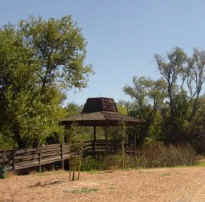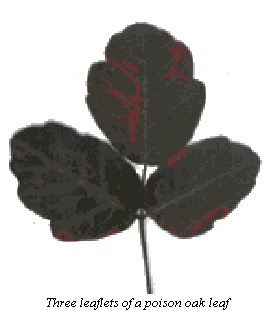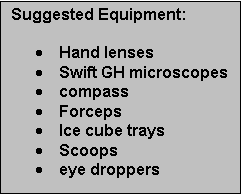GENERAL ACTIVITIES IN STIVERS LAGOON
OVERVIEW
Stivers Lagoon
provides a glimpse into a typical wetland that was common in Fremont prior to
urbanization. The abundance of
water attracted the Ohlone Indians as well as the early Spaniards and
missionaries. The abundance of
water is captured from prehistoric times when sabercats, mammoths, mastodons and
camels roamed the lush savanna. During the rainy season, excess water percolated
down through the sediments and formed a large aquifer.
This aquifer still supplies water for many of Fremontís perennial
waterways. This wetland helps
maintain the flow and quality of water that will eventually
flow into San Francisco Bay.
The trace of the Hayward fault passes in front of the entrance to Stivers
Lagoon. Movement along
this fault, created a depression, allowing water from below to steep
upwards to wet this land naturally. Geologically
these wetlands are referred to as sag ponds.
The supply of water for Muskrat Creek is in
part natural and artificial. Some
water from Mission Creek is diverted toward the gazebo where it joins the flow
from Muskrat Creek. This nature walk is only a small portion of the 40 acres
assigned to the Stivers Lagoon area.
The sights and sounds of Stivers Lagoon
change from season to season.
 Depending on when you are planning your trip will determine what you will see.
During spring, the trees will starting to bloom.
In the summer there will be lush vegetation as the warm days and soil
moisture will maintain green growth, even though most of the surrounding area will
be brown from lack of water.
Depending on when you are planning your trip will determine what you will see.
During spring, the trees will starting to bloom.
In the summer there will be lush vegetation as the warm days and soil
moisture will maintain green growth, even though most of the surrounding area will
be brown from lack of water.
As you walk through the area there are many
activities that can help illustrate different environmental concepts as well as
the importance of marshes to early inhabitants.
This section can help you plan your activities by providing information
for each stations and suggested activities.
Before you go on your trip you should
remember that this nature area is designed so students can see the beauty of
nature. The trails are maintained
so students can see the surrounding areas without disturbing the local
inhabitants. This is their home and
children should respect them during the visit.
Students should remain on trails at all times.
Poison Oak
 Make
sure that your students can identify poison oak before you start your trip.
The leaves of poison oak change color depending on the season.
Even the branches can cause an allergic reaction. The vines can
intertwine with other low-growing shrubs, and
can climb trees.
Make
sure that your students can identify poison oak before you start your trip.
The leaves of poison oak change color depending on the season.
Even the branches can cause an allergic reaction. The vines can
intertwine with other low-growing shrubs, and
can climb trees.
Poison oak is
found in woodlands, parks and coastal areas in the western states of North
America. This woody shrub and herbaceous vine can reach a height of six
feet. This plant can be confused with the California blackberry due to
their similar leaf pattern. The stems, leaves and branches are
covered with an oil-like sap which can cause a rash or type of dermatitis to
many humans and some dogs that have little fur on their body. However, not all
people have a reaction. The sap which causes the allergic reaction is the reason
this plant was named "the most dangerous plant in California".
During different seasons of the year this plant
changes color from a shiny, deep green in the early part of the spring to
deep red and gold at the end of fall.
This plant is not covered with leaves all year round; in the winter all that
remains is the stalk.
After you visit
Stivers Lagoon it is good to wash your hands and other exposed parts of the body
with soap and water. This
helps to remove any of the irritating oil.
If you take care with your students, there should be no problem, but care
must be taken.
Prepare students
before they visit this area. Wear
comfortable shoes and bring appropriate cover.
Take water on a warm day, but remember this area will be cooler than the
surrounding area.
Several general activities are outlined in
the next section.
Then a brief description of each station follows.
Following the descriptions are worksheets that can help you decide what
activity you would like to do with your children.

 Depending on when you are planning your trip will determine what you will see.
During spring, the trees will starting to bloom.
In the summer there will be lush vegetation as the warm days and soil
moisture will maintain green growth, even though most of the surrounding area will
be brown from lack of water.
Depending on when you are planning your trip will determine what you will see.
During spring, the trees will starting to bloom.
In the summer there will be lush vegetation as the warm days and soil
moisture will maintain green growth, even though most of the surrounding area will
be brown from lack of water.
